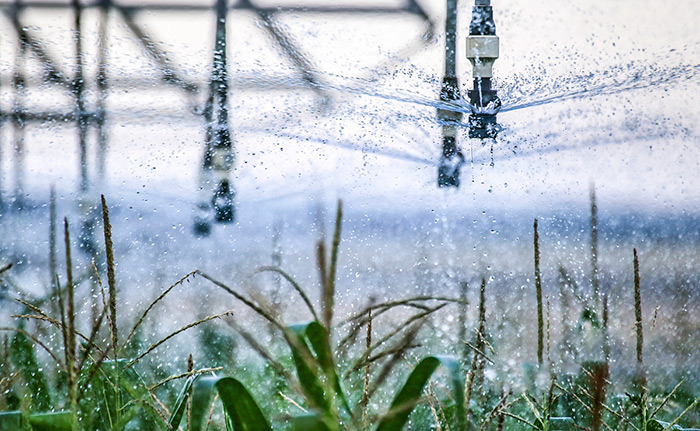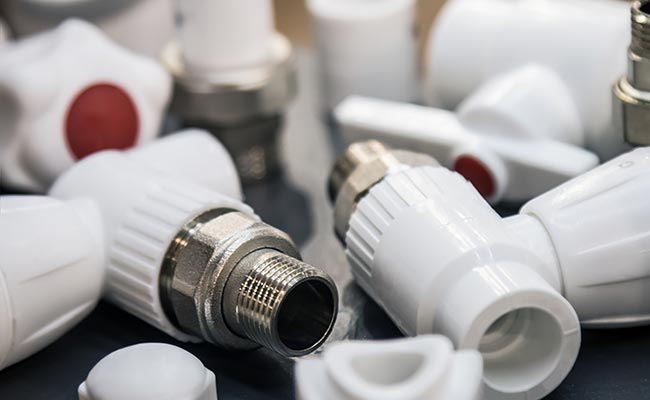Å velge riktige ventiler for industrielle rørsystemer er avgjørende for å sikre effektivitet og pålitelighet. Industrier står overfor utfordringer som å håndtere trykkvariasjoner, velge materialer som tåler tøffe forhold og sikre lekkasjesikre forbindelser. OEM UPVC-ventiler løser disse utfordringene med sin eksepsjonelle design og materialegenskaper. De tilbyr uovertruffen holdbarhet, kjemisk motstand og kostnadseffektivitet. Deres presisjon, brukervennlighet og bærekraft gjør dem til et foretrukket valg for ulike bruksområder. Ved å investere i disse ventilene kan industrier oppnå langsiktig ytelse og redusert vedlikeholdsbehov.
Viktige konklusjoner
- OEM UPVC-ventiler er svært sterke og varer lenge. De fungerer bra i tøffe industrielle områder uten å knekke lett.
- Disse ventilene kan håndtere sterke kjemikalier uten å bli skadet. Dette gjør dem pålitelige for mange forskjellige bruksområder.
- Å velge originale UPVC-ventiler kan spare mye penger. De trenger lite stell og bidrar til å redusere driftskostnadene over tid.
- OEM UPVC-ventiler er lette, noe som gjør dem enkle å installere. Dette sparer tid og reduserer arbeidskostnadene i fabrikker.
- Bruk av originale UPVC-ventiler bidrar til å beskytte miljøet. De er resirkulerbare og bedre for miljøvennlig praksis.
Hva er OEM UPVC-ventiler?
Definisjon og nøkkelfunksjoner
Når jeg snakker omOEM UPVC-ventilerJeg refererer til ventiler laget av uplastisert polyvinylklorid (UPVC)-materiale, spesielt utviklet for industrielle rørsystemer. Disse ventilene er produsert av originalutstyrsprodusenter (OEM-er), noe som sikrer høye kvalitetsstandarder og presisjon. UPVC, som er et stivt og slitesterkt materiale, gir utmerket strukturell integritet. I motsetning til vanlig PVC inneholder det ikke myknere, noe som gjør det mer robust og holdbart.
Noen viktige funksjoner ved disse ventilene inkluderer deres lette design, korrosjonsbestandighet og kompatibilitet med et bredt spekter av kjemikalier. De har også glatte indre overflater, noe som reduserer turbulens og forbedrer strømningseffektiviteten. Disse egenskapene gjør OEM UPVC-ventiler til et pålitelig valg for industrier som krever jevn ytelse.
Rolle i industrielle rørsystemer
I industrielle rørsystemer har jeg sett hvor viktig det er å ha komponenter som tåler tøffe forhold. OEM UPVC-ventiler spiller en viktig rolle her. De regulerer strømmen av væsker og gasser, og sikrer problemfri drift. Deres kjemiske motstand gjør dem ideelle for håndtering av aggressive stoffer, mens holdbarheten sikrer at de fungerer bra selv i høytrykksmiljøer.
Disse ventilene er også enkle å installere og vedlikeholde, noe som reduserer nedetid i industrielle prosesser. Enten det er i kjemiske prosesseringsanlegg eller vannbehandlingsanlegg, gir OEM UPVC-ventiler påliteligheten og effektiviteten industrien trenger for å operere sømløst.
Fordeler med UPVC-materiale
Materialet som brukes i disse ventilene, UPVC, tilbyr flere fordeler. For det første er det utrolig slitesterkt. UPVC beholder egenskapene sine over tid, selv i utfordrende miljøer. Det motstår korrosjon, avskalling og kjemiske angrep, noe som sikrer lang levetid. Dette gjør det til et foretrukket valg for bruksområder som drikkevannsrør og utendørs rør som er utsatt for sollys.
Her er hvorfor UPVC skiller seg ut:
- Den er lett, noe som gjør installasjonen enklere og mer kostnadseffektiv.
- Den glatte innvendige overflaten minimerer friksjon og forbedrer strømningshastighetene.
- Den ruster eller korroderer ikke, i motsetning til metallbeslag, som krever hyppig vedlikehold.
- Dens inerte natur sikrer kompatibilitet med et bredt spekter av kjemikalier.
Ved å velge OEM UPVC-ventiler tror jeg industrien kan dra nytte av disse materialegenskapene samtidig som den sikrer langsiktig ytelse og reduserte vedlikeholdskostnader.
Topp 6 grunner til å velge OEM UPVC-ventiler
Holdbarhet og lang levetid
Ytelse under tøffe forhold
Jeg har sett hvordan industrielle miljøer kan være nådeløse, med ekstreme temperaturer, høyt trykk og eksponering for etsende stoffer. OEM UPVC-ventiler utmerker seg under disse forholdene. Den robuste konstruksjonen sikrer at de opprettholder ytelsen selv i de tøffeste situasjoner. For eksempel motstår disse ventilene mekanisk belastning og overholder strenge kvalitetsstandarder, noe som gjør dem til et pålitelig valg for langvarig bruk.
| Bevistype | Beskrivelse |
|---|---|
| Kjemisk motstand | uPVC industrirør har utmerket kjemisk motstand, egnet for etsende stoffer. |
| Mekanisk stressmotstand | Svært slitesterk og korrosjonsbestandig, noe som sikrer langvarig pålitelighet. |
| Samsvar med kvalitetsstandarder | Overholdelse av strenge kvalitetsstandarder sikrer produktets pålitelighet og ytelse. |
Denne holdbarheten betyr færre utskiftinger og reparasjoner, noe som sparer tid og ressurser.
Motstand mot slitasje
OEM UPVC-ventiler motstår slitasje bedre enn mange alternativer. De glatte indre overflatene reduserer friksjon, noe som minimerer risikoen for skade over tid. I motsetning til metallventiler korroderer eller brytes de ikke ned når de utsettes for fuktighet eller kjemikalier. Dette gjør dem ideelle for industrier som krever jevn ytelse uten hyppig vedlikehold.
Kjemisk motstand
Korrosjonsbestandighet
Korrosjon kan lamme industrielle systemer, men OEM UPVC-ventiler tilbyr en løsning. Deres kjemiske inertitet sikrer at de ikke påvirkes av etsende stoffer. Studier viser at UPVC-beslag er svært motstandsdyktige mot korrosjon, noe som gjør dem pålitelige i miljøer der andre materialer svikter. Denne motstanden forbedrer levetiden og påliteligheten deres.
Kompatibilitet med ulike kjemikalier
Jeg har lagt merke til at disse ventilene håndterer et bredt spekter av kjemikalier med letthet. De er spesielt effektive mot:
- Syrer
- Alkalier
- Etsende stoffer som ofte finnes i industrielle omgivelser
Denne allsidigheten gjør dem egnet for industrier som kjemisk prosessering og vannbehandling, der eksponering for aggressive stoffer er vanlig.
Kostnadseffektivitet
Reduserte vedlikeholdskostnader
OEM UPVC-ventiler krever minimalt vedlikehold. Deres motstand mot korrosjon og slitasje betyr færre reparasjoner og utskiftinger. Dette reduserer nedetid og vedlikeholdskostnader, slik at industrien kan fokusere på produktivitet.
Langsiktig sparing
Disse ventilene bidrar også til langsiktige besparelser. De glatte overflatene forbedrer væsketransporten ved å redusere friksjonstap, noe som senker energiforbruket. Effektive strømningshastigheter sikrer jevn ytelse og kutter driftskostnader over tid. I industrielle omgivelser oversettes denne effektiviteten direkte til betydelige økonomiske fordeler.
Presisjon og kvalitetssikring
Høye produksjonsstandarder
Jeg har alltid ment at høye produksjonsstandarder er ryggraden i pålitelige industrikomponenter. OEM UPVC-ventiler er intet unntak. Disse ventilene produseres under strenge kvalitetskontroller, noe som sikrer at materialsammensetningen og trykkklassifiseringene oppfyller industriens krav. Denne omhyggelige prosessen garanterer påliteligheten deres i kritiske applikasjoner. For eksempel fremmer utformingen av UPVC-rør som brukes i disse ventilene hydraulisk effektivitet. Ved å minimere friksjonstap og turbulens opprettholder ventilene jevn væskestrøm, noe som er avgjørende for langvarig ytelse.
Overholdelsen av disse strenge standardene gir meg tillit til holdbarheten deres. Enten de brukes i kjemisk prosessering eller vannbehandlingssystemer, leverer disse ventilene konsekvent optimale resultater. Deres evne til å tåle krevende forhold uten at det går på bekostning av ytelsen gjør dem til et pålitelig valg for industrielle rørsystemer.
Konsekvent ytelse
Konsistens er nøkkelen i industriell drift, og jeg har sett hvordan OEM UPVC-ventiler utmerker seg på dette området. De glatte indre overflatene sikrer at væskene flyter effektivt, noe som reduserer risikoen for blokkeringer eller trykkfall. Denne designen forbedrer ikke bare ytelsen, men minimerer også energiforbruket, noe som er en betydelig fordel for industrier som ønsker å kutte driftskostnader.
Ved å opprettholde optimale strømningshastigheter over tid, gir disse ventilene et pålitelighetsnivå som er vanskelig å matche. Jeg har erfart at denne konsistensen stammer fra deres høykvalitetskonstruksjon og presisjonsteknikk, som eliminerer vanlige problemer som lekkasjer eller slitasje. For bransjer som krever pålitelig ytelse, er disse ventilene en utmerket investering.
Enkel installasjon og vedlikehold
Lett og enkel å håndtere
En av funksjonene jeg setter mest pris på med OEM UPVC-ventiler er deres lette design. Dette gjør dem utrolig enkle å håndtere under installasjon. I motsetning til tyngre metallalternativer krever ikke disse ventilene spesialutstyr eller mye arbeidskraft. Denne enkelheten fremskynder installasjonsprosessen og reduserer arbeidskostnadene.
Deres kompakte og ergonomiske design muliggjør også sømløs integrering i eksisterende systemer. Enten du oppgraderer et gammelt oppsett eller starter et nytt prosjekt, passer disse ventilene uanstrengt, noe som sparer tid og krefter.
Minimale vedlikeholdskrav
Vedlikehold er ofte et problem i industrielle systemer, men jeg har funnet ut at originale UPVC-ventiler krever svært lite vedlikehold. Regelmessige inspeksjoner og enkel rengjøring er vanligvis nok til å holde dem i topp stand. Her er noen typiske vedlikeholdspraksiser jeg anbefaler:
- Utfør visuelle inspeksjoner for skader eller lekkasjer.
- Sørg for at tilkoblingene forblir sikre og fri for lekkasjer.
- Rengjør ventiloverflatene for å forhindre opphopning av smuss.
- Skyll systemet med rent vann for å fjerne sediment.
Disse enkle trinnene bidrar til å forlenge ventilenes levetid og opprettholde effektiviteten. Deres motstand mot korrosjon og slitasje reduserer behovet for hyppige reparasjoner eller utskiftninger ytterligere, noe som gjør dem til et kostnadseffektivt valg for langvarig bruk.
Miljømessig bærekraft
Resirkulerbarhet av materialer
Jeg har alltid beundret hvordan OEM UPVC-ventiler bidrar til miljømessig bærekraft. UPVC-materialet som brukes i disse ventilene er fullt resirkulerbart, noe som betyr at det kan gjenbrukes på slutten av livssyklusen. Dette reduserer avfall og støtter miljøvennlig praksis i industriell drift. Ved å velge disse ventilene kan industrien inngå globale tiltak for å minimere miljøpåvirkningen.
Lavere miljøpåvirkning
Produksjon og bruk av OEM UPVC-ventiler har et lavere miljøavtrykk sammenlignet med tradisjonelle materialer som metall. Deres lette natur reduserer transportutslipp, mens holdbarheten minimerer behovet for utskiftinger. I tillegg sikrer motstanden mot kjemisk nedbrytning at de ikke slipper ut skadelige stoffer i miljøet. Jeg tror disse funksjonene gjør dem til et utmerket valg for industrier som ønsker å ta i bruk bærekraftig praksis uten å gå på kompromiss med ytelsen.
Bruksområder for OEM UPVC-ventiler
Bransjer som drar nytte av det
Kjemisk prosessering
Jeg har observert at kjemiske prosesseringsanlegg ofte håndterer svært etsende stoffer.OEM UPVC-ventilerutmerker seg i disse miljøene på grunn av sin eksepsjonelle kjemiske motstand. De håndterer syrer, alkalier og andre aggressive kjemikalier uten å brytes ned. Denne påliteligheten sikrer problemfri drift og reduserer risikoen for lekkasjer eller feil. Den lette designen forenkler også installasjonen, noe som gjør dem til et praktisk valg for store anlegg.
Vannbehandling
Vannbehandlingsanlegg er i stor grad avhengige av slitesterke og trygge komponenter. OEM UPVC-ventiler oppfyller disse behovene perfekt. Deres giftfrie natur gjør dem ideelle for drikkevannssystemer, mens deres korrosjonsmotstand sikrer lang levetid. Jeg har sett hvordan de glatte indre overflatene optimaliserer strømningseffektiviteten, noe som er avgjørende for å opprettholde jevn vannkvalitet. Her er en rask oversikt over fordelene deres innen vannbehandling:
| Fordel | Beskrivelse |
|---|---|
| Varighet | UPVC motstår korrosjon, noe som sikrer langvarig bruk. |
| Kostnadseffektivitet | Rimeligere enn metallalternativer. |
| Lettvektsdesign | Forenkler installasjonen og reduserer arbeidskostnadene. |
| Enkel betjening | Kvartsvingmekanismen gir enkel bruk. |
| Kjemisk motstand | Håndterer ulike væsker og kjemikalier effektivt. |
| Temperatur allsidighet | Passer for både varmt- og kaldtvannssystemer. |
| Minimalt vedlikehold | Krever lite vedlikehold, noe som reduserer nedetid. |
| Jevn drift | Optimaliserer strømningseffektiviteten med minimal friksjon. |
| Sikkerhetsforsikring | Ikke giftig og trygg for drikkevannssystemer. |
Mat og drikke
I næringsmiddel- og drikkevareindustrien er det avgjørende å opprettholde hygiene og sikkerhet. Jeg har funnet ut at OEM UPVC-ventiler passer utmerket her. Det giftfrie materialet sikrer samsvar med sikkerhetsstandarder, mens motstanden mot avskalling og korrosjon forhindrer forurensning. Disse ventilene støtter også presis strømningskontroll, noe som er viktig for prosesser som tapping og blanding.
Spesifikke brukstilfeller
Høykorrosjonsmiljøer
Høykorrosjonsmiljøer krever materialer som tåler konstant eksponering for aggressive stoffer. OEM UPVC-ventiler skinner i disse omgivelsene. For eksempel bruker kjemiske prosesseringsanlegg dem til å håndtere etsende væsker pålitelig. I landbruksvanningssystemer motstår de de skadelige effektene av gjødsel og plantevernmidler. Her er en nærmere titt:
| Søknadstype | Beskrivelse |
|---|---|
| Kjemiske prosesseringsanlegg | UPVC-beslag tåler etsende stoffer, noe som sikrer pålitelighet. |
| Landbruksvanningssystemer | UPVC motstår de korrosive effektene av gjødsel og plantevernmidler. |
Presisjonsstrømningskontrollsystemer
Presisjon er avgjørende i systemer som krever nøyaktig strømningsregulering. Jeg har sett hvordan OEM UPVC-ventiler leverer jevn ytelse i disse applikasjonene. De glatte indre overflatene og den presise konstruksjonen minimerer turbulens og sikrer jevne strømningshastigheter. Dette gjør dem uunnværlige i industrier som legemidler og matproduksjon, hvor selv små avvik kan påvirke kvaliteten.
Hvordan velge riktig OEM UPVC-ventil
Viktige hensyn
Størrelse og trykkklassifisering
Når jeg velger riktig ventil, starter jeg alltid med å vurdere størrelsen og trykkklassifiseringen. Disse faktorene påvirker direkte ventilens ytelse og kompatibilitet med systemet. Her er noen viktige punkter jeg vurderer:
- TrykkhensynJeg sørger for at ventilen kan håndtere både arbeidstrykket og designtrykket til systemet. Dette forhindrer feil under drift.
- SluttforbindelserJeg velger endekoblinger som matcher rørsystemet for å unngå lekkasjer og sikre en sikker passform.
- LeveringsfaktorerJeg sjekker også om leverandøren kan levere ventilene i tide. Dette er avgjørende for å holde prosjektene i rute.
Ved å ta hensyn til disse aspektene kan jeg trygt velge en ventil som oppfyller systemets krav og fungerer pålitelig.
Kompatibilitet med eksisterende systemer
Jeg har lært at kompatibilitet med eksisterende systemer er en annen kritisk faktor. Før jeg tar et valg, vurderer jeg materialene og dimensjonene til det nåværende oppsettet. For eksempel sørger jeg for at ventilmaterialet samsvarer med rørene for å forhindre kjemiske reaksjoner eller nedbrytning. Jeg bekrefter også at ventilens dimensjoner stemmer overens med systemet for å unngå installasjonsproblemer. Dette trinnet sparer tid og sikrer sømløs integrering.
Evaluering av leverandører
Viktigheten av sertifiseringer
Sertifiseringer spiller en viktig rolle i beslutningsprosessen min. De indikerer at ventilene oppfyller bransjestandarder for kvalitet og sikkerhet. For eksempel ser jeg etter ISO-sertifiseringer, som garanterer at produksjonsprosessen overholder strenge retningslinjer. Disse sertifiseringene gir meg tillit til produktets pålitelighet og ytelse. Å velge sertifiserte ventiler minimerer risikoer og sikrer samsvar med regelverk.
Ettersalgsstøtte
Kundeservice etter salg er en annen faktor jeg prioriterer. En pålitelig leverandør tilbyr hjelp med installasjon, feilsøking og vedlikehold. Jeg har erfart at denne støtten kan utgjøre en betydelig forskjell i ventilenes langsiktige ytelse. For eksempel bidrar leverandører som tilbyr garantier og teknisk veiledning til å løse problemer raskt, noe som reduserer nedetid. Sterk kundeservice etter salg gjenspeiler leverandørens forpliktelse til kundetilfredshet.
Å velge OEM UPVC-ventiler gir seks viktige fordeler: holdbarhet, kjemisk motstand, kostnadseffektivitet, presisjon, brukervennlighet og bærekraft. Jeg har sett hvordan disse funksjonene gjør dem til et pålitelig og effektivt valg for industrielle rørsystemer. Investering i OEM-produkter av høy kvalitet sikrer langsiktig ytelse og reduserte vedlikeholdskostnader.
Publisert: 25. feb. 2025









